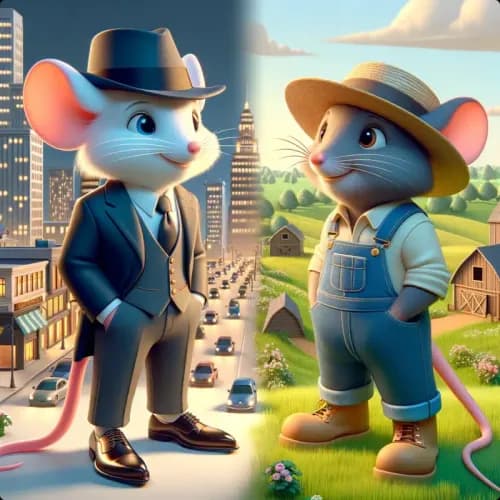Vishnu Sharma | India
Le Tigre, le Brahmane et le Chacal
Un brahmane libère un tigre piégé, qui trahit sa promesse, mais le trompe avec l'aide d'un chacal rusé.

Il était une fois, dans un petit village, un vieil homme sage appelé Brahmane. Un jour, alors qu'il se promenait dans la jungle, il trouva un tigre dans une cage. Le tigre aperçut le Brahmane et dit : "S'il te plaît, aide-moi ! Un chasseur m'a piégé."
Le Brahmane était gentil mais aussi intelligent. Il savait que les tigres pouvaient être dangereux. Il demanda : "Pourquoi devrais-je t'aider ? Tu pourrais me manger si je te libère."
"Je promets de ne pas te manger," dit le tigre. "J'ai besoin de ton aide."
Le Brahmane se sentit désolé pour le tigre et décida de l'aider. Il ouvrit la cage et libéra le tigre. Mais dès que le tigre fut libre, il dit : "J'ai très faim, et je veux te manger."
Le Brahmane fut surpris. "Mais tu avais promis de ne pas me manger !"
Le tigre dit : "J'ai changé d'avis."
Pensant rapidement, le Brahmane dit : "Demandons à trois autres si c'est juste que tu me manges. S'ils disent tous oui, alors je te laisserai me manger."
Le tigre accepta. Ils allèrent demander à d'autres. D'abord, ils rencontrèrent un grand vieil arbre. Le Brahmane demanda s'il était juste que le tigre le mange. L'arbre dit : "Les humains nous abattent, donc il est juste que le tigre te mange."
Ensuite, ils rencontrèrent un buffle. Le Brahmane posa la même question. Le buffle dit : "Les humains nous font travailler dur, donc il est juste que le tigre te mange."
Enfin, ils rencontrèrent un chacal malin. Le Brahmane raconta l'histoire au chacal. Le chacal fit semblant d'être confus. "Je ne comprends pas," dit le chacal. "Peux-tu me montrer ce qui s'est passé ?"
Le tigre accepta et retourna dans la cage. Dès qu'il fut à l'intérieur, le chacal dit au Brahmane de verrouiller la cage. Le Brahmane obéit et fut en sécurité.
Reconnaissant de la ruse du chacal, le Brahmane laissa le tigre et rentra chez lui.
















